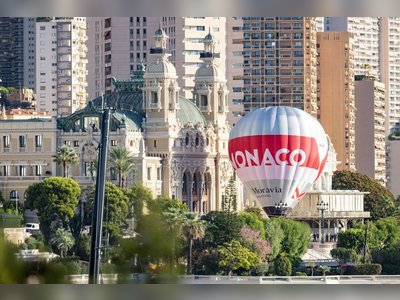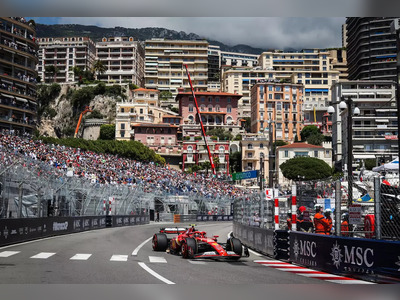Monaco Launches Digital Taxi Service Amid Ongoing Supply Challenges
The new Taxi Monaco app aims to modernize transport services, but night-time shortages persist.
Monaco has launched a new digital taxi service with the introduction of the Taxi Monaco application, which became available on April 8, 2025. This initiative is intended to address technological delays in the transport sector and simplify the taxi ordering process.
The application, developed by local start-up Skyline, offers real-time taxi booking, driver tracking, fare estimation, and the option for in-app payment in approximately two-thirds of cases, with cash remaining an option for the remainder.
Designed as a public service supported by independent drivers, the platform is funded by the Monegasque government as part of the Extended Monaco program, which aims to enhance access to taxis, improve transparency, and restore public trust in a historically outdated system.
Pierre-André Chiappori, Minister Counselor for Finance and Economy, acknowledged the initiative as a long-awaited progress that meets international standards.
Despite this modernization, significant challenges remain, particularly regarding night-time service availability.
Monaco has a fleet of 95 permanent taxis and 28 additional seasonal vehicles that operate between April 1 and November 1. The taxis are organized into three time slots: 5 AM to 1 PM, 1 PM to 9 PM, and 9 PM to 5 AM. However, specific high-demand periods—especially following restaurant and nightclub closures or during special events—continue to exceed supply.
Marc Brezzo, President of the Association of Independent Taxi Operators of Monaco (AETIM), noted that while there will not be an immediate solution to this issue, the application will provide valuable data for optimizing operations during peak times.
The seasonal fleet, fully electric, is intended to help better allocate resources during critical hours.
The primary goal of the Taxi Monaco application is to centralize requests, enhance user experience, and streamline taxi services.
Users can leave feedback, receive digital receipts, and schedule rides to Nice or Ventimiglia.
The app incorporates advanced features, including family pairing and shared business accounts.
However, it does not increase the number of available drivers.
Laurent Campora, Secretary General of AETIM, cautioned that while the new tool will help identify deficiencies, the underlying supply issue remains.
Major events concentrated over short periods, such as the Grand Prix, create particular challenges for scaling services for peak demand.
The Monegasque government has expressed its willingness to adjust seasonal quotas based on data collected through the application.
An initial assessment of the app's impact is expected in the coming months.
Taxi Monaco represents a significant shift in managing taxi services within the principality, but user expectations are high, particularly among night-time riders, which include tourists, residents, and young people from neighboring areas.
As the app rolls out—accessible on both App Store and Google Play—many users hope that it marks just the beginning of addressing long-standing structural imbalances in the sector.
The application is designed to serve not only as a booking tool but potentially as a reliable monitoring system and a catalyst for regulatory change in Monaco's taxi services.
The application, developed by local start-up Skyline, offers real-time taxi booking, driver tracking, fare estimation, and the option for in-app payment in approximately two-thirds of cases, with cash remaining an option for the remainder.
Designed as a public service supported by independent drivers, the platform is funded by the Monegasque government as part of the Extended Monaco program, which aims to enhance access to taxis, improve transparency, and restore public trust in a historically outdated system.
Pierre-André Chiappori, Minister Counselor for Finance and Economy, acknowledged the initiative as a long-awaited progress that meets international standards.
Despite this modernization, significant challenges remain, particularly regarding night-time service availability.
Monaco has a fleet of 95 permanent taxis and 28 additional seasonal vehicles that operate between April 1 and November 1. The taxis are organized into three time slots: 5 AM to 1 PM, 1 PM to 9 PM, and 9 PM to 5 AM. However, specific high-demand periods—especially following restaurant and nightclub closures or during special events—continue to exceed supply.
Marc Brezzo, President of the Association of Independent Taxi Operators of Monaco (AETIM), noted that while there will not be an immediate solution to this issue, the application will provide valuable data for optimizing operations during peak times.
The seasonal fleet, fully electric, is intended to help better allocate resources during critical hours.
The primary goal of the Taxi Monaco application is to centralize requests, enhance user experience, and streamline taxi services.
Users can leave feedback, receive digital receipts, and schedule rides to Nice or Ventimiglia.
The app incorporates advanced features, including family pairing and shared business accounts.
However, it does not increase the number of available drivers.
Laurent Campora, Secretary General of AETIM, cautioned that while the new tool will help identify deficiencies, the underlying supply issue remains.
Major events concentrated over short periods, such as the Grand Prix, create particular challenges for scaling services for peak demand.
The Monegasque government has expressed its willingness to adjust seasonal quotas based on data collected through the application.
An initial assessment of the app's impact is expected in the coming months.
Taxi Monaco represents a significant shift in managing taxi services within the principality, but user expectations are high, particularly among night-time riders, which include tourists, residents, and young people from neighboring areas.
As the app rolls out—accessible on both App Store and Google Play—many users hope that it marks just the beginning of addressing long-standing structural imbalances in the sector.
The application is designed to serve not only as a booking tool but potentially as a reliable monitoring system and a catalyst for regulatory change in Monaco's taxi services.











